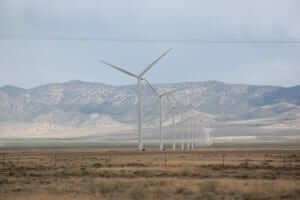Half of California’s electricity will come from renewable energy in 15 years
This guest blog is by Ryan Koronowski, editor of Climate Progress and was originally posted by Climate Progress on September 12.
Late Friday night, the California State Assembly voted 51-26 to pass SB 350, a landmark bill that would boost renewable energy and make buildings twice as efficient as before.
The legislature sent the bill to California Gov. Jerry Brown for his signature, and he is expected to sign it later this month, as the legislation makes real the goals Brown set down earlier this year in his inaugural address.
The state’s Renewable Portfolio Standard (RPS) currently requires utilities to provide 33 percent of their electricity generation from renewable sources, such as solar, wind, and geothermal power, by 2020. The new bill, The Clean Energy and Reduction Act, would increase that target to 50 percent by 2030. It would also require a 50 percent increase in energy efficiency in buildings by that year.
Brown also issued an executive order in January that aims to reduce the state’s greenhouse gas emissions by 40 percent below 1990 levels by 2030 — a big step to the larger 2050 goal of reducing GHGs by 80 percent under 1990 levels. This legislation accelerates the pace to that target.
“Today, California demonstrated once again that it is a world leader in tackling the climate crisis, protecting public health, and expanding the booming clean energy economy,” said Sierra Club executive director Michael Brune in a statement. “Ensuring that renewable energy makes up half of all electricity sold in the state by 2030 is both necessary and eminently achievable — and the significance of this move will echo around the world.”
Brune said Gov. Brown and Senate President Pro Tem Kevin de León, along with the full legislature deserved praise. “Working together,” he said, “these leaders have given another major boost of momentum to the future of our planet ahead of international climate negotiations this December in Paris.”
“This is, make no doubt about it, landmark legislation for California,” said Assembly Speaker Toni Atkins, who presented the bill on the Assembly floor Friday night. “We will continue to lead the way.”
Nearly all the Assembly’s Republicans voted against the bill, saying it would hurt poor people by raising energy prices. The bill’s advocates say it would lower prices by improving efficiency, and the current RPS system has been considered an “unmitigated success.” The costs of wind and solar in the state have dropped quickly, and are expected to continue so that renewable energy will be cheaper than fossil fuels within the next few years.
Brown said back in January that “taking significant amounts of carbon out of our economy without harming its vibrancy is exactly the sort of challenge at which California excels.”
After the Assembly passed the bill, it had to go back to the Senate for final passage because one key component got stripped out. On Wednesday, following intense lobbying from the oil industry and the defection of a group of moderate Democrats, the bill’s advocates decided to abandon a key component of the bill that would have set a 2030 goal of cutting petroleum use in cars and trucks by 50 percent.
“The fact that, despite overwhelming scientific opinion and statewide public support, we still weren’t able to overcome the silly-season scare tactics of an outside industry which has repeatedly opposed environmental progress and energy innovation — means that there’s a temporary disconnect in our politics which needs to be overcome,” de León said.
De León said the new steps built on the state’s climate leadership but that “our efforts to reduce carbon emissions are far from over as global warming and air pollution remain one of the most important issues of our generation and one the greatest threats for generations to come.”





